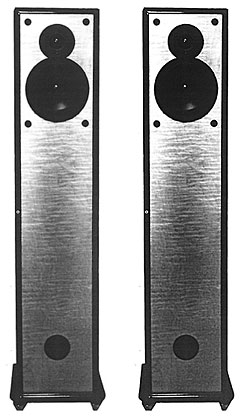| Columns Retired Columns & Blogs |
These speakers can now be had in the $200 - $300 range on the second hand market. I purchased my pair second hand from a friend and I love them. I am powering them with the NAD326BEE integrated, and my source 99.9% of the time is my REGA Planar 3 with Ortfon 2M Black cartridge. They sound superb in my humble opinion.
 For anyone who wants to be up to date on all the audio products available in North America, Audio's Annual Equipment Directory is an indispensable source of information. (So is the publication you're reading now, of course.) The 1992 Directory (aka Audio's October issue) arrived when I was finishing up the review of the Acarian Alón IV (see
For anyone who wants to be up to date on all the audio products available in North America, Audio's Annual Equipment Directory is an indispensable source of information. (So is the publication you're reading now, of course.) The 1992 Directory (aka Audio's October issue) arrived when I was finishing up the review of the Acarian Alón IV (see 




































